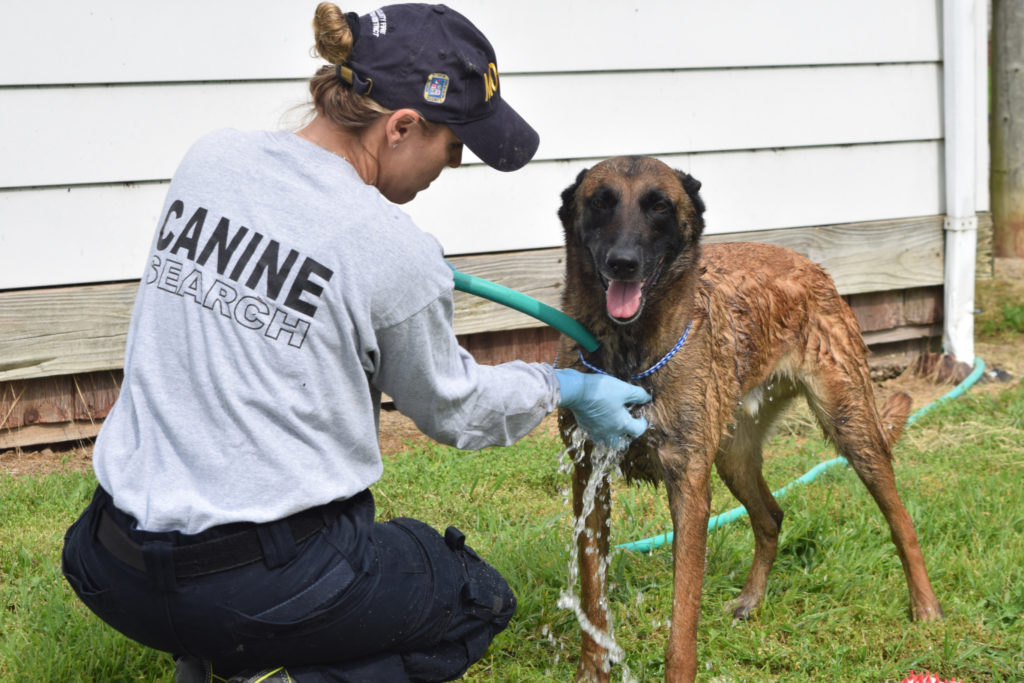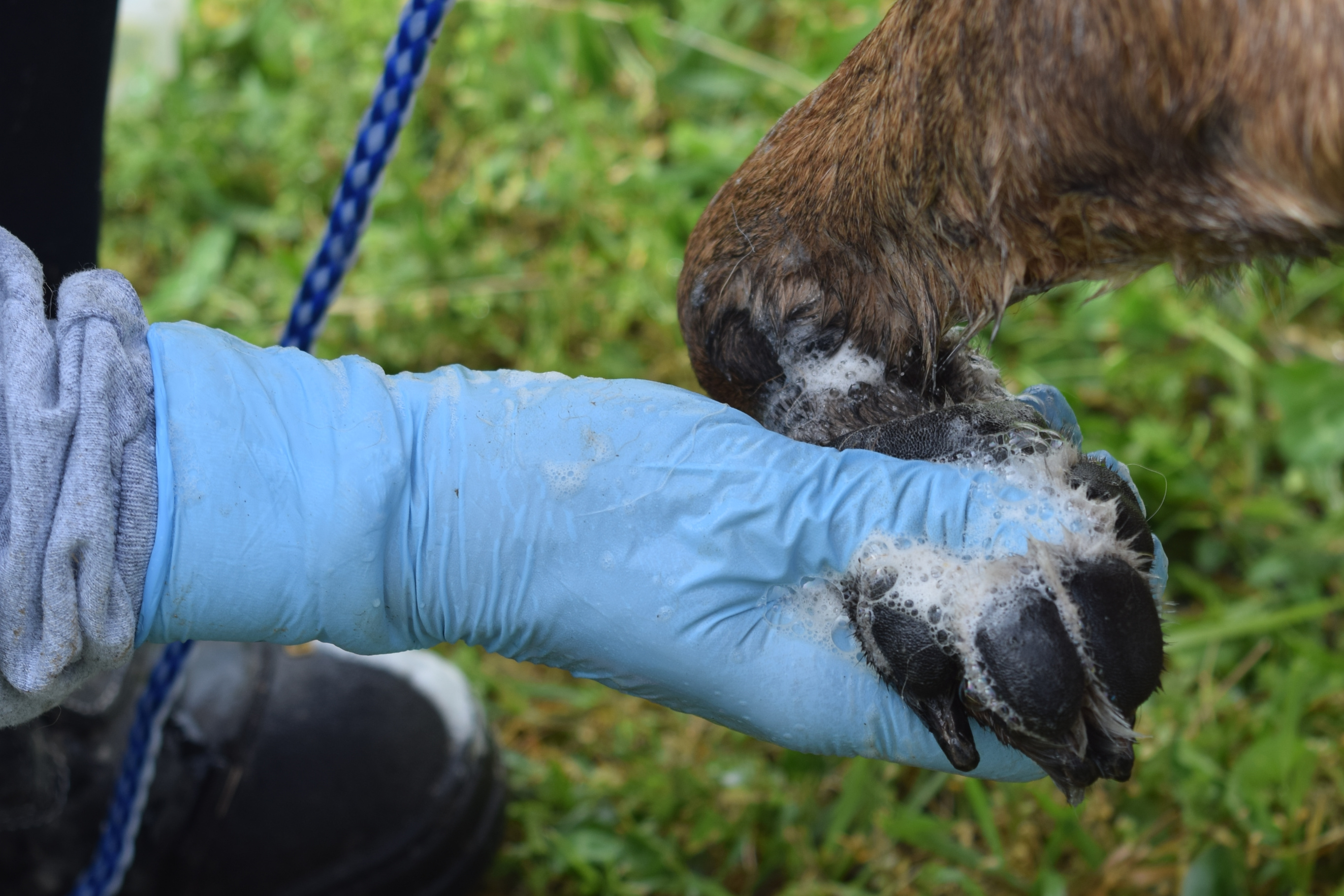Part 3: Blue-Green Algae & Your Search Dog
In Part 3 of our 4-part series on blue-green algae, professor, decontamination expert, and FEMA Canine Search Specialist Dr. Erin Perry gives us best practices for decontaminating your dog when you suspect exposure.
What considerations are there when decontaminating your dog?
Best practices for decontamination include consideration of route of exposure, available supplies and time to treatment. Potential routes of exposure include ingestion, inhalation and direct contact. Mostly commonly dogs are thought to ingest the toxins from drinking contaminated water but inhalation and dermal contact are also implicated. Due to the dangerously high toxicity associated with certain cyanobacteria, rapid decontamination is necessary for exposed dogs. Poisoning may occur within minutes or days depending on the type and accumulation of cyanotoxin present.

Why is decontamination important?
If you believe your dog has been exposed he/she should be monitored and self-grooming behaviors prevented until complete decontamination can occur. Canines will commonly lick paws, lower legs, flank and abdominal areas following vigorous activity. If canines attempt to self-groom prior to complete washing (i.e. in the car), steps should be taken to interrupt and stop this behavior in order to prevent further ingestion of the cyanotoxins which may be present. A muzzle can be used to prevent self-grooming but only if heat stress is not a concern and respiration is not impaired.
How do I decon my search dog?
Canines exposed to contaminated water must be immediately and thoroughly washed with copious amounts of clean water to remove the cyanobacteria that produce the dangerous toxins.
Gross Decontamination
If dog-washing facilities are not immediately available rinse the canine with as much clean water available (gross decontamination) then seek full washing facilities immediately.
Technical Decontamination?
EVERY area of the dog must be thoroughly washed using a veterinary dermatological shampoo with an antibacterial agent. Use a washcloth to avoid getting soap in the eyes and nasal passages.

Are there any safety considerations for the handler?
Handlers should utilize protective clothing and gloves during the wash procedure to prevent skin exposure.
What about my gear?
All clothing, leashes, collars, kennels or other equipment suspected of contamination should be thoroughly washed with an antibacterial agent prior to reuse. Porous or cloth toys (tennis balls, canvas tug toys, etc.) should be disposed of after suspected contamination.
Any final words to share with your fellow handlers?
As a handler who has experienced the devastation that occurs when your partner is exposed to poisonous compounds, please remember that this is a time sensitive issue. Do not delay decontamination or seeking veterinary treatment. Your partner’s life may depend on it.
(In case you missed it, read Part 1 to learn how to recognize blue-green algae and get some useful tools that will help you identify compromised bodies of water before you respond to a call out and check out Part 2 so you know the symptoms and what immediate actions to take if you suspect exposure.)
Be the first to know about new training opportunities!
Join our email list so we can share information about new workshops and online courses with you!

Dr. Erin Perry is an Associate professor at Southern Illinois University with more than 15 years of experience with working canines. Her research focuses on bringing practical solutions to the challenges encountered by working canines on deployment including gastrointestinal upset as a result of stress and improvements to current decontamination methods. Dr. Perry works with the Federal Emergency Management Agency as a Canine Handler, Evaluator and Instructor. Her published work includes investigations into the impacts of travel stress on working canines, a comprehensive review on canine olfaction, and studies examining the mechanics of canine decontamination. She has deployed with her canine partners to numerous disasters including Hurricane Katrina, Hurricane Sandy, Joplin Tornado, Colorado Flooding, Hurricane Matthew and Hurricane Harvey, and Hurricane Florence.

